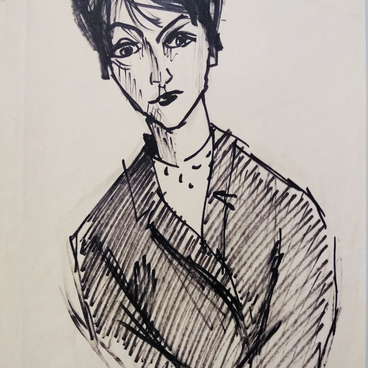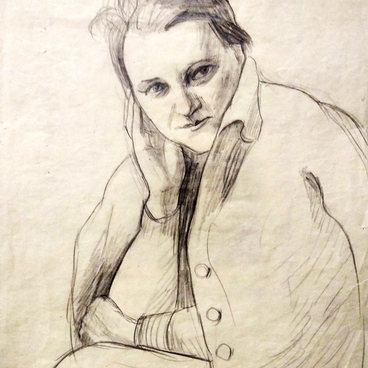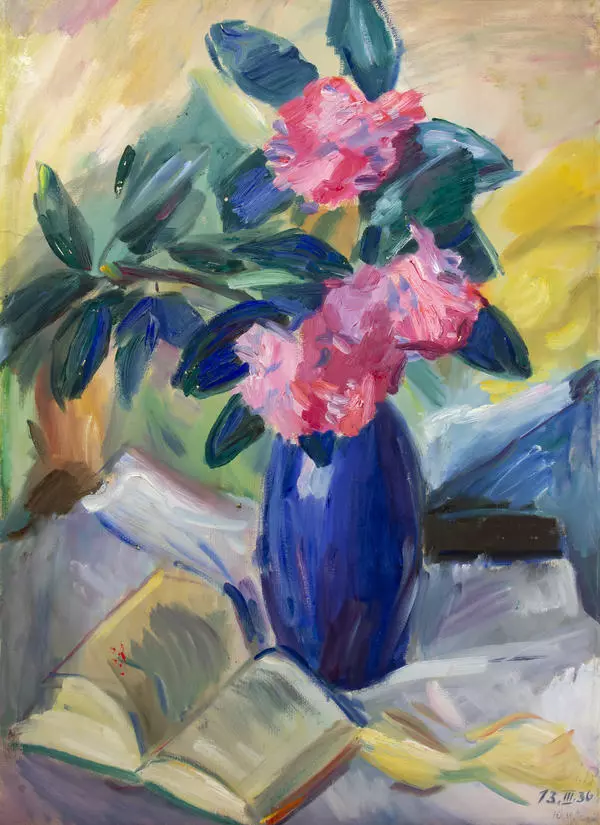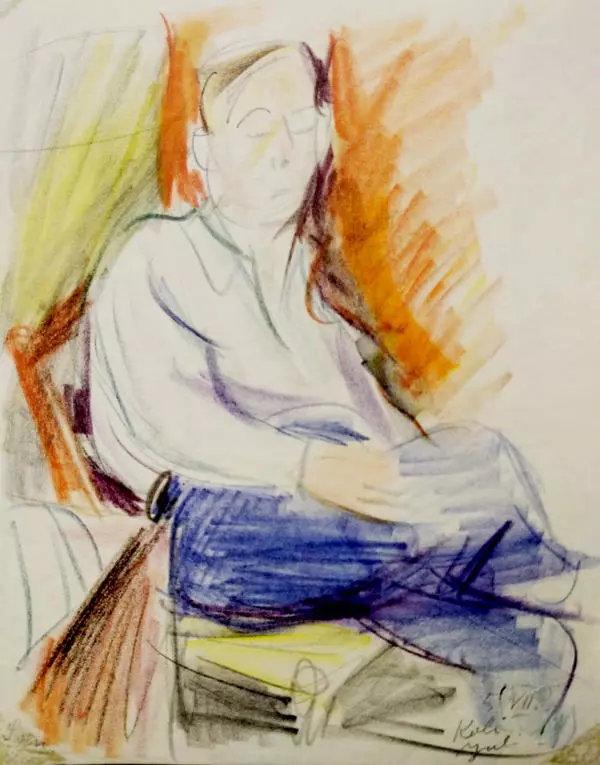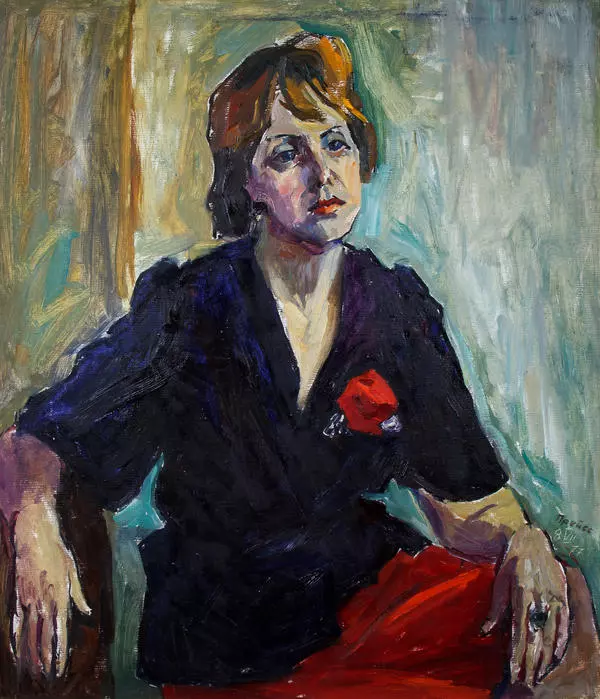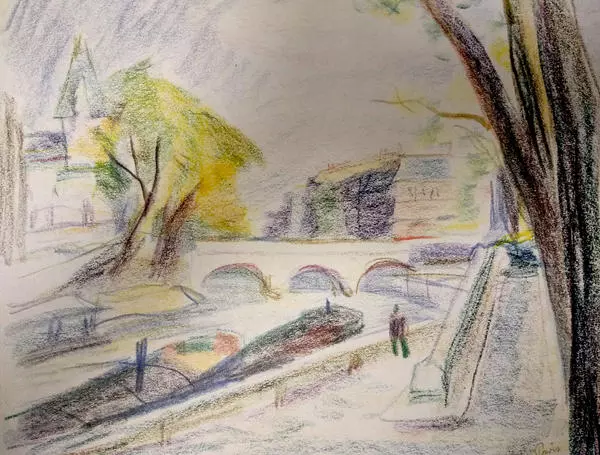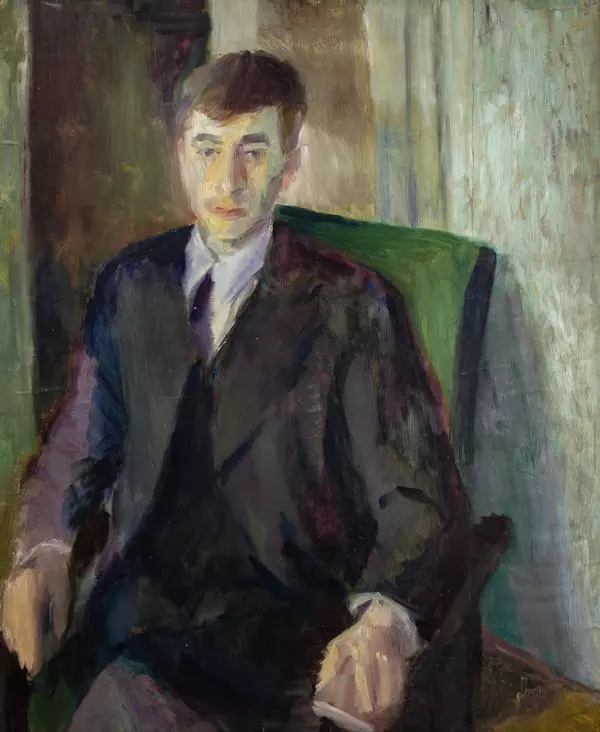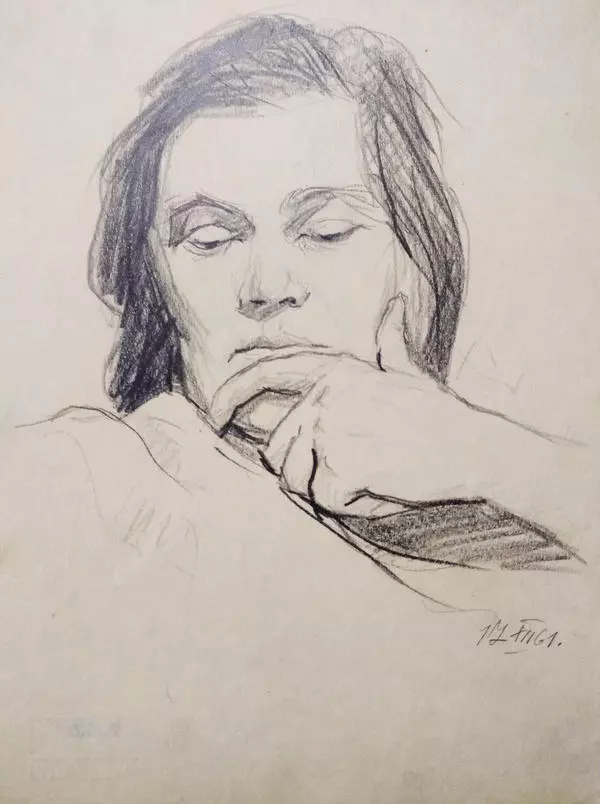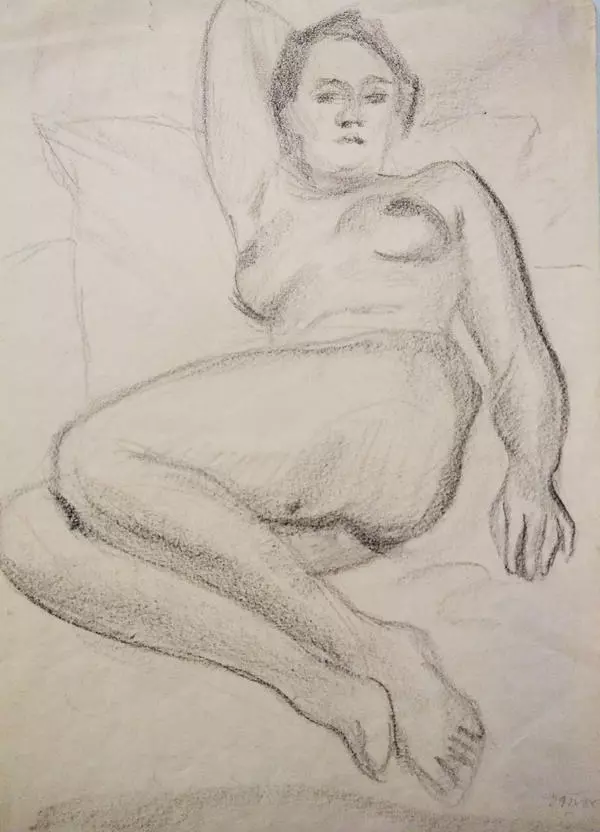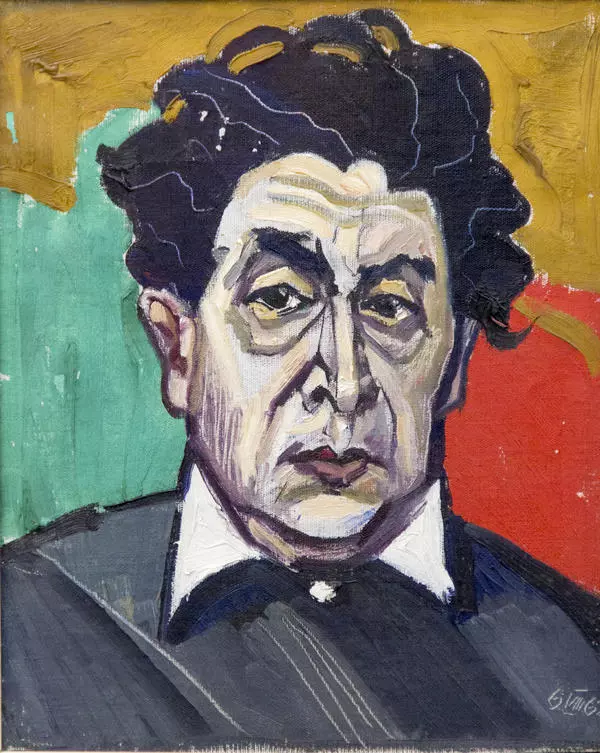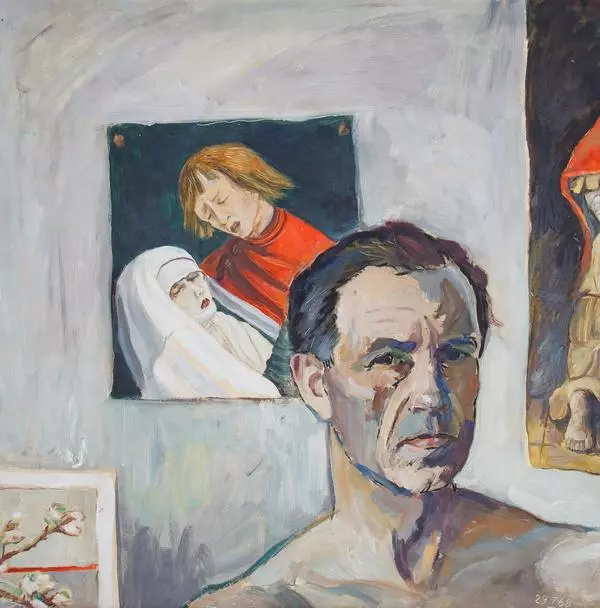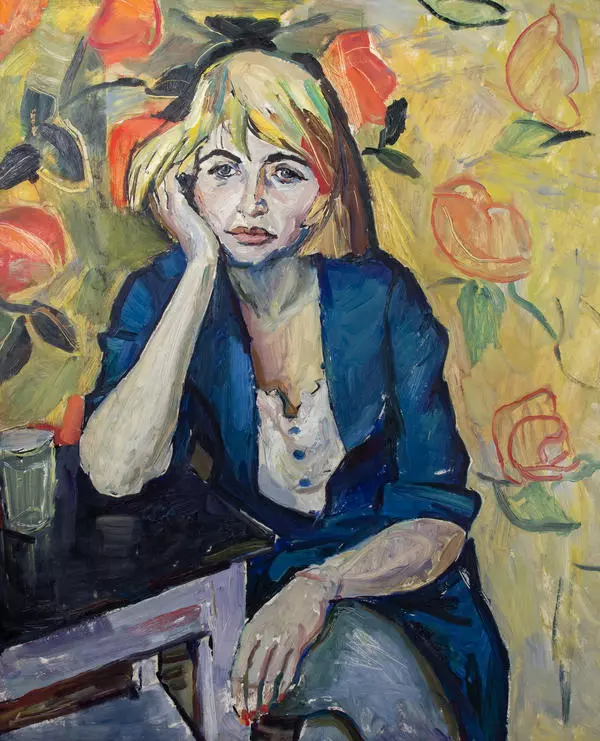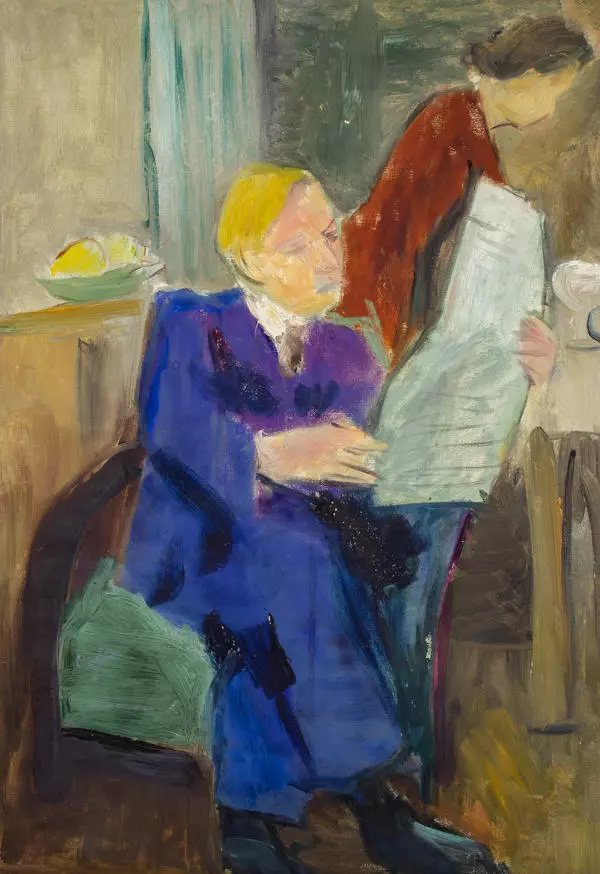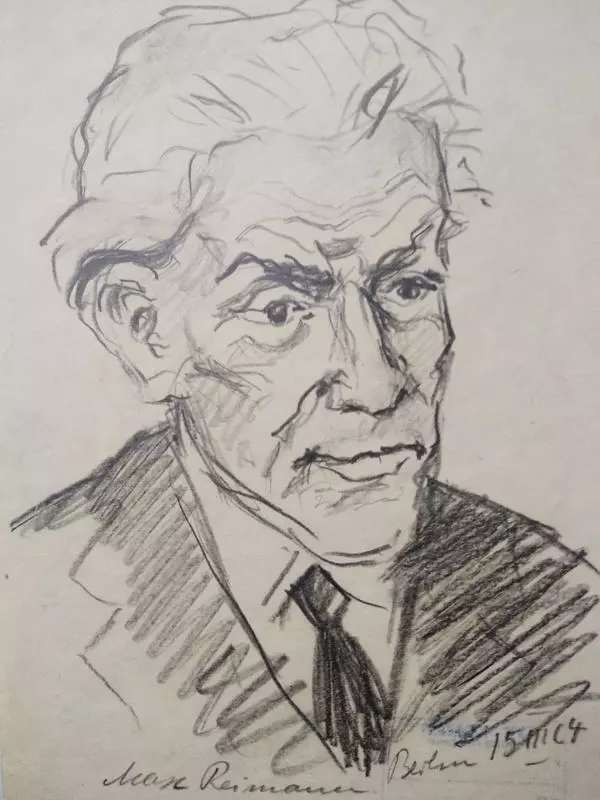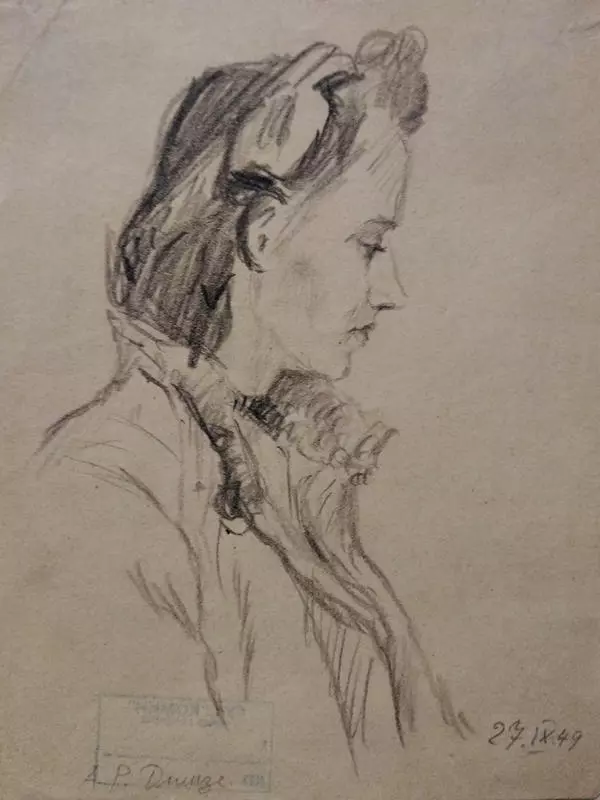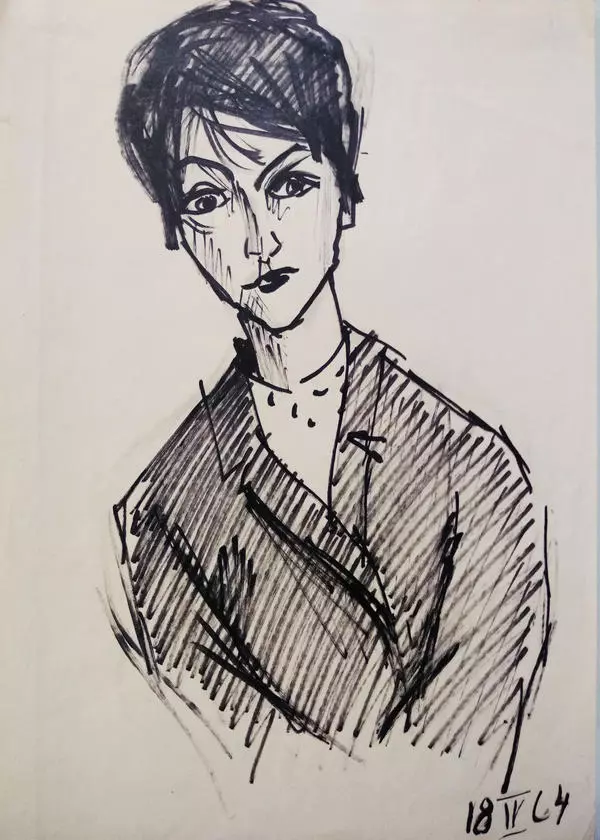Jurgis Preiss painted the picture Saratov. Kommunarov Street 3 in 1940. Shortly before that, in 1939, he and his wife Gertrude Gennis were expelled from Moscow to Saratov. There they lived for two years. Then came the decree of the Presidium of the Supreme Soviet of the USSR On the resettlement of Germans living in the Volga region. Preiss and Gennis were sent to Eastern Siberia.
#1
Jurgis Preiss
Saratov. Kommunarov Street 3. 1940
#2
#3
About picture
#5
Saratov is one of the first works of Preiss that has a gloomy colouration. The main shade in its colour scheme was grey. Red, yellow and green tones look dull against the general background and do not enliven the picture.
#4
The artist captured a view of the city outskirts that opened from an upper window. In the foreground, he depicted wooden barracks and garages, in the distance — factory pipes. All buildings look monotonous, as if covered with a light haze. There are no bright details and colour accents on the canvas. Preuss deliberately emphasized the dull mood of the picture. It is enhanced by the fact that the landscape is uninhabited: even on the snow there are no traces.
The painting Saratov dates back to the intimist line in the art of Jurgis Preiss. The artist often depicted on canvas certain moments of his own life — sometimes dreary and bleak, like this picture. The manner in which it is painted is close to Realism. Preiss sought to convey what he saw as reliably as possible.
In the 1940s, Jurgis Preiss rarely created landscapes. Saratov became one of the few paintings of this genre that the artist completed at that time. Preiss' creative boost began later, when he moved to Kemerovo. He lived there from 1956 to 1984, until the end of his life. At the time, the artist painted many portraits. One of the most important models for him was his wife, Gertrude Gennis. He portrayed her in different settings, created portraits with pencils and oil paints. In his later works, Jurgis Preiss returned to a manner that was close to Expressionism. In the works of that period, he often used clear-cut angular lines, contrasting colours, sharp lines and brushstrokes.
Saratov. Kommunarov Street 3. 1940 entered the collection of the Kemerovo Museum in 2000. It was donated by the adopted daughter and heiress of Jurgis Preiss — Lyudmila Biryukova.
The painting Saratov dates back to the intimist line in the art of Jurgis Preiss. The artist often depicted on canvas certain moments of his own life — sometimes dreary and bleak, like this picture. The manner in which it is painted is close to Realism. Preiss sought to convey what he saw as reliably as possible.
In the 1940s, Jurgis Preiss rarely created landscapes. Saratov became one of the few paintings of this genre that the artist completed at that time. Preiss' creative boost began later, when he moved to Kemerovo. He lived there from 1956 to 1984, until the end of his life. At the time, the artist painted many portraits. One of the most important models for him was his wife, Gertrude Gennis. He portrayed her in different settings, created portraits with pencils and oil paints. In his later works, Jurgis Preiss returned to a manner that was close to Expressionism. In the works of that period, he often used clear-cut angular lines, contrasting colours, sharp lines and brushstrokes.
Saratov. Kommunarov Street 3. 1940 entered the collection of the Kemerovo Museum in 2000. It was donated by the adopted daughter and heiress of Jurgis Preiss — Lyudmila Biryukova.
#6
Kemerovo Regional Museum of Fine Arts
читать дальшескрыть
00:00
00:00
1x
Saratov
Время создания
1940
Размер
34,5x48,5 cm
34.5×48.5 cm
34.5×48.5 cm
Техника
Oil on canvas
0
Открыть в приложении
Поделиться
